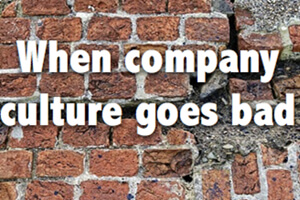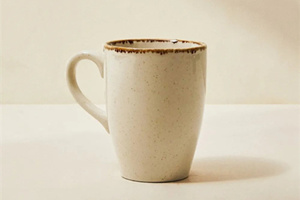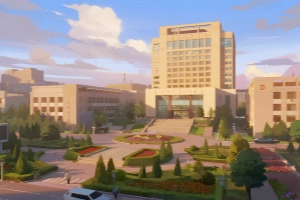Why Japanese Denim Is So Expensive
Narrator: It takes between one to two months for Hisao Manabe to dye these threads a deep indigo blue. Denim made from these threads will maintain this rich color, and so will Manabe’s nails for three weeks. That’s because Manabe uses real indigo instead of the synthetic dyes most jeans are made with today.
A pair of Momotaro jeans dyed with natural indigo can cost over $2,000. But using real indigo is just one element that can raise the price of Japanese denim. Each stage of production requires meticulous attention. So what exactly makes Japanese denim different? And is that enough to make it so expensive?
In basic terms, Japanese denim refers to denim made in Japan. But today, it often implies selvage denim. The name comes from the way fabric is woven on these old shuttle looms. They weave fabric with a sealed, or self-finished, edge, hence the name selvage. It means the end of the fabric won’t fray or unravel. You’ll notice a pair of selvage jeans by the cuff. There’s typically a colored line along the outseam.
“Let me adjust the hem, please. A sleeker hem will give a little more shape.”
Narrator: This type of denim is made here in Kojima, Japan.
Hisao Manabe: I grew up wearing jeans from this town since I was a teenager.
Narrator: Momotaro is one of Kojima’s most well-known denim brands. But before Momotaro makes denim, it must first dye the threads. The company’s most expensive jeans are hand-dyed with natural indigo. Natural indigo comes from the leaves of the Indigofera plant. Dyeing fabric with natural indigo has been a valued art form in Japan for centuries.
Hisao Manabe: It is simple and repetitive work. It requires patience. And the natural indigos are expensive. Mass production is not possible without coming up with new ways of doing this.
Narrator: Manabe dyes 60 rolls of cotton over several days. He wrings each roll out and hangs it up to dry before dyeing another.
Hisao Manabe: After five dyes, the color will be about this color. When it dries, it is about half as dark as it is now.
Narrator: Manabe must dye each roll a total of about 30 times. Otherwise, the color won’t be a dark enough blue. Dyeing jeans this way doesn’t only take longer; it also costs more. A kilogram of some synthetic indigo can cost between $4 and $5. Depending on the quality, natural indigo might cost 10 times that.
Hisao Manabe: It is very expensive. The ones we procure cost about 150,000 yen [around $1,170] per bale.
Narrator: That one bale is only enough to dye about 15 pairs of jeans. Although using natural dye raises the cost of production, it has unique effects on jeans that can’t be produced by synthetic dyes.
Hisao Manabe: Dyes taken from plants include not only blue, but other colors as well. For example, it contains a little yellow dye. Such things subtly change the blue tones. There is a color there that cannot be produced with synthetic indigo.
Narrator: Today, cheaper synthetic dyes have mostly replaced natural ones, so jeans still made with natural dyes are often considered a premium product, which is partly why Momotaro’s kintin, or gold-label jeans, are worth over $2,000. The increased price of this pair is a nod to the extra effort, skill, and money needed to dye the threads by hand and get the color just right.
Not all Japanese denim or Momotaro jeans are made with natural indigo, but even so, the price remains high, around $200 to $300 for a pair like this. And that goes back to the way Japanese denim is woven.
Before Toyota made cars, it made looms like this. Originally introduced in the 1920s, these Toyoda looms are no longer made today. And although they look and sound like they’re working fast... weaving fabric this way takes five times longer than weaving on modern projectile looms.
Hisao Manabe: Originally, such machines were the only way to make jeans in the world or in the United States. And even now, a century later, people pay millions of yen for vintage jeans, jeans from around the 1900s or 1920s.
Narrator: Despite the looms being automated, an experienced Momotaro technician has to keep a close eye on them as they run. He checks to see each loom is working smoothly and that all the threads are aligned correctly. Even so, it’s possible something will go wrong.
Hisao Manabe: If it breaks, we have to use it while fixing it. Since the parts are not newly made, each part is removed from old machines and used.
Narrator: On top of weaving slowly, the looms produce fabric less than a yard wide. That’s about half the width of non-selvage denim, so producers need more fabric to make a pair of selvage jeans. This is yet another factor that increases the cost of production and ultimately the final price of the jeans.
Selvage shuttle looms are also less precise than projectile looms. But variations in the fabric make each yard unique. And, ironically, that’s what gives these jeans one of their biggest appeals. While most other jeans have a smooth surface, Japanese denim is a little bit rougher.
Hisao Manabe: This unevenness is the most important aspect of denim and is reflected in the vertical fading of the denim as it ages.
Narrator: While most Momotaro jeans are made on the automated looms, the most expensive gold-label jeans are produced with an even slower, more traditional method: by hand, with an antique loom. It takes one hour for Kazuki Ikeda to weave just 10 centimeters of fabric. While this process raises the price, the extra effort gives the jeans a distinctly different feel.
Kazuki Ikeda: The biggest difference is the feel of the skin. With regular denim, it feels a little stiff or starchy. Those that are handwoven are soft from the start. You can feel it when you try them on.
Narrator: And for denim enthusiasts, traveling from Thailand to Tokyo is worth the trip to buy Momotaro’s most expensive pair.
Ake: Initially, when you bought a new pair of jeans, you feel it’s a little bit hard, and you feel like it’s a little bit hard to move at first, right? But this one, even from the start, yeah, it feels so comfortable, like you have worn it for some time.
Narrator: After the fabric is woven by hand or selvage shuttle loom, it heads to the sewing room. According to Heddels, on average, most other types of denim weigh between 11 and 14 ounces, while most denim from Japan weighs 20 ounces. A heavier fabric makes Naomi Takebayashi’s job more challenging.
Naomi Takebayashi: The thickest thread we use is No. 0. It is almost as thick as kite string. It is very hard to sew. There are some parts that I still find difficult, even after all the years I have done sewing. Difficulty may not be the right word. Of course, I can sew, but sometimes I am not always satisfied with the results.
Narrator: Another cornerstone of Japanese denim is the artisanal nature of the way the jeans are finally formed. At Momotaro, all the stitching is done by hand. The same goes for adding each copper rivet. The final look and feel of a finished pair largely depend on Takebayashi’s dedication to detail. Because selvage looms are less precise, the fabric will naturally have several imperfections. But if Momotaro’s retail stores find anything wrong with a pair of jeans, they mark it with a small sticker and send it here, to the quality control room. Takebayashi sifts through the flagged jeans using a tweezer to repair each marked spot.
Momotaro is one of around 40 denim makers in Kojima, considered the birthplace of denim in Japan. While Japanese denim from this city has found a luxury category to call its own, the denim industry hasn’t been prominent in Kojima for very long.
Hisao Manabe: There was a time when Japan longed for America. It was around the time of the 1964 Tokyo Olympics. This led to a growing longing for freedom and America. Music, movies, and of course, fashion became free and unrestrained, as did the student movement and many other things. It was during this time that jeans production began in Kojima, in 1964.
Narrator: In the decades since, Japanese denim has reached far outside Japan. Today, it’s considered one of the finest types of denim in the world.















